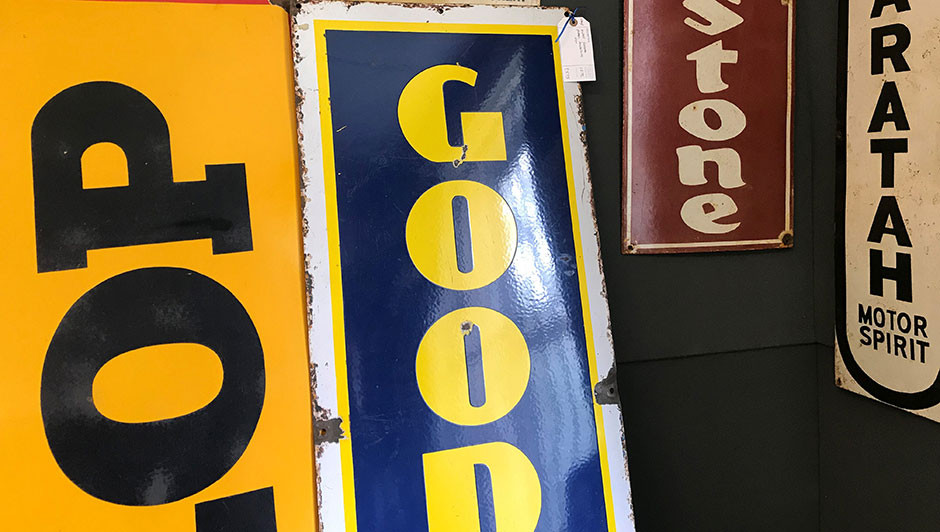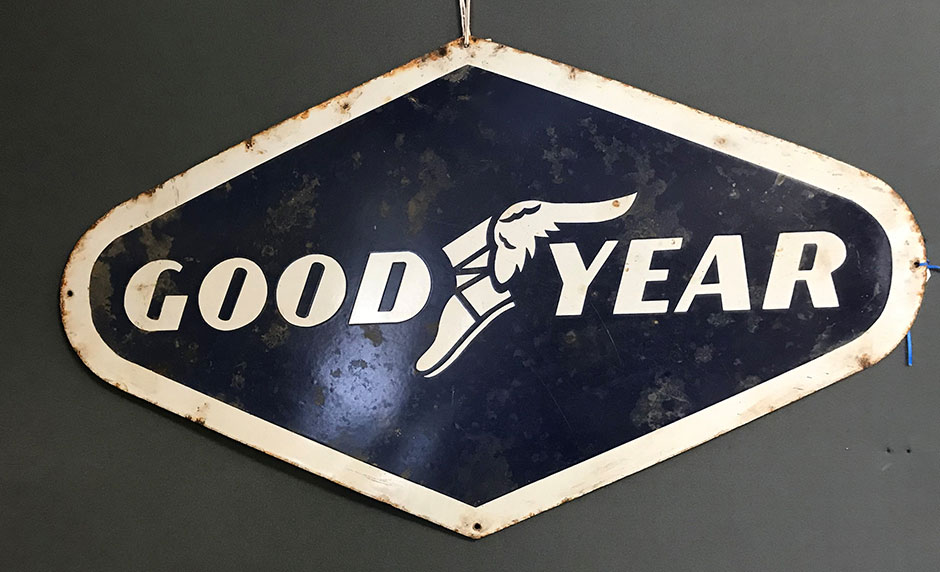
Why collect antique signs? There are many reasons behind their popularity. There’s something about an old Campbell’s Soup sign that fills a room with nostalgic charm, delivering a flavour of life in the past.
Preserving this small slice of history plays a huge part in the reason people collect signs. Antiques of this kind are conversation pieces, often valued as an art form due to their eye-popping lettering and vivid colouring. Displaying an old Guinness sign in the right kitchen adds character, while a bright vintage Shell sign in a modern garage can make the space sing.
There’s no right or wrong way to collect antique signs. Some collectors grasp whatever catches their eye, others specialise in a certain category. This guide will give you more knowledge in each area, as well as what to look out for when browsing antique signs for sale.

A brief history of antique signs
Most people in Europe and America were illiterate in the 17th and 18th centuries. As a result, shopkeepers had to get figural with their signs, which is why you’ll immediately identify a barbers shop pole and its helix of red, white and blue stripes (often without blue in the UK). Likewise, if you run into a wooden statue of a Native American, you know you’re outside a tobacco shop.
By the 19th century, lettered signs blossomed. Branding was artfully hand painted onto signs, many of famous logos we know and love today. At the back end of this century, new machines led to the introduction of tin signs. Many of these were vandalised or melted down for metal during World War II, making authentic antique signs of this kind rare finds today.
Antique signs: what to look out for
The most popular antique signs are those in the beer and petrol-related categories. Tobacco signs are well-loved: a Rajah cigar enamel advertising sign from 1905 can value at a couple of hundred pounds. Food and drink are also in high demand, especially Coca-Cola signs.
Antique signs from America are also highly collectable. Coshocton in Ohio was once the United States’ largest sign-producing city - and if you find an authentic tin sign produced by Ohio-based Tuscarora Advertising Company and Standard Advertising Company, you’re onto a winner. The companies merged to form the Meek and Beach Co. (another name to look out for) and specialised in coloured lithograph on tin signs.
As with all antiques, many factors can influence value. The condition, visual appeal, materials used and scarcity of antique signs vary: the higher the quality, craftsmanship, beauty and rarity of a piece, the higher the value. Do your research - restorations and reproductions are plentiful. Some signs of ageing are acceptable, but large areas of rust, holes, creases and severe fading can drastically lower the value.
Where to find antique signs for sale
Finding authentic antique signs is harder than ever. You may find a sleeper (undiscovered treasure) at places like flea markets or car boot sales. But be cautious: sellers at these events may not even know if the antique signs are genuine themselves.
Another lesser-known places to hunt out gems are the original buildings these signs were produced for. Cafes, petrol stations, barbers, and other shops often have antique signs hanging, simply because no one has taken them down. If you spot one you love, it can’t hurt to ask the owner if they’d be interested in selling it - can it?
Of course, the best places to browse antique signs for sale are antique shops and centres. Signs are hugely popular purchases at Hemswell Antique Centres - our visitors are often overwhelmed by the breadth of choice and simply spectacular size of the centres. It’s a true haven for magpies, taste-makers, art buffs and history lovers.
A trip to Hemswell in lovely Lincoln will guarantee you find a treasure to take home. Browse our wide range of advertising collectables for sale and you’ll find antique signs flogging everything from butchers to bakers to cigarette makers.